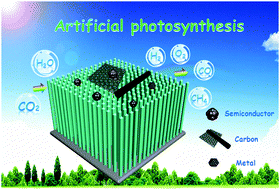Heterostructured semiconductor nanowire arrays for artificial photosynthesis
Abstract
The current rapid industrial development generates a high need for alternative sustainable sources of energy. Artificial photosynthesis, which can directly convert solar energy into usable or storable energy resources, provides such a promising alternative. Semiconductor nanowires have gained growing interest in artificial photosynthesis due to their unique geometrical and electronic characteristics, which can provide large aspect-ratios, direct pathways for charge transport, decoupling the direction of charge carrier collection, and low reflectance induced by light scattering and trapping. In particular, heterostructured semiconductor nanowire arrays (NWAs) have recently been of great interest in artificial photosynthesis because of their unique structural and physicochemical properties. Nanowire structure can lower the electrochemical over-potential while the heterojunctions can enhance light absorption and charge separation, which thus increase the artificial photosynthesis efficiency of heterostructured semiconductor NWAs. In this review, we will highlight recent advances in the application of heterostructured semiconductor NWAs to artificial photosynthesis. An emphasis will be placed on the unique characteristics and benefits of using heterostructured semiconductor NWAs with different heterojunctions for artificial photosynthesis, as well as the associated challenges and directions for future research in this area.


 Please wait while we load your content...
Please wait while we load your content...